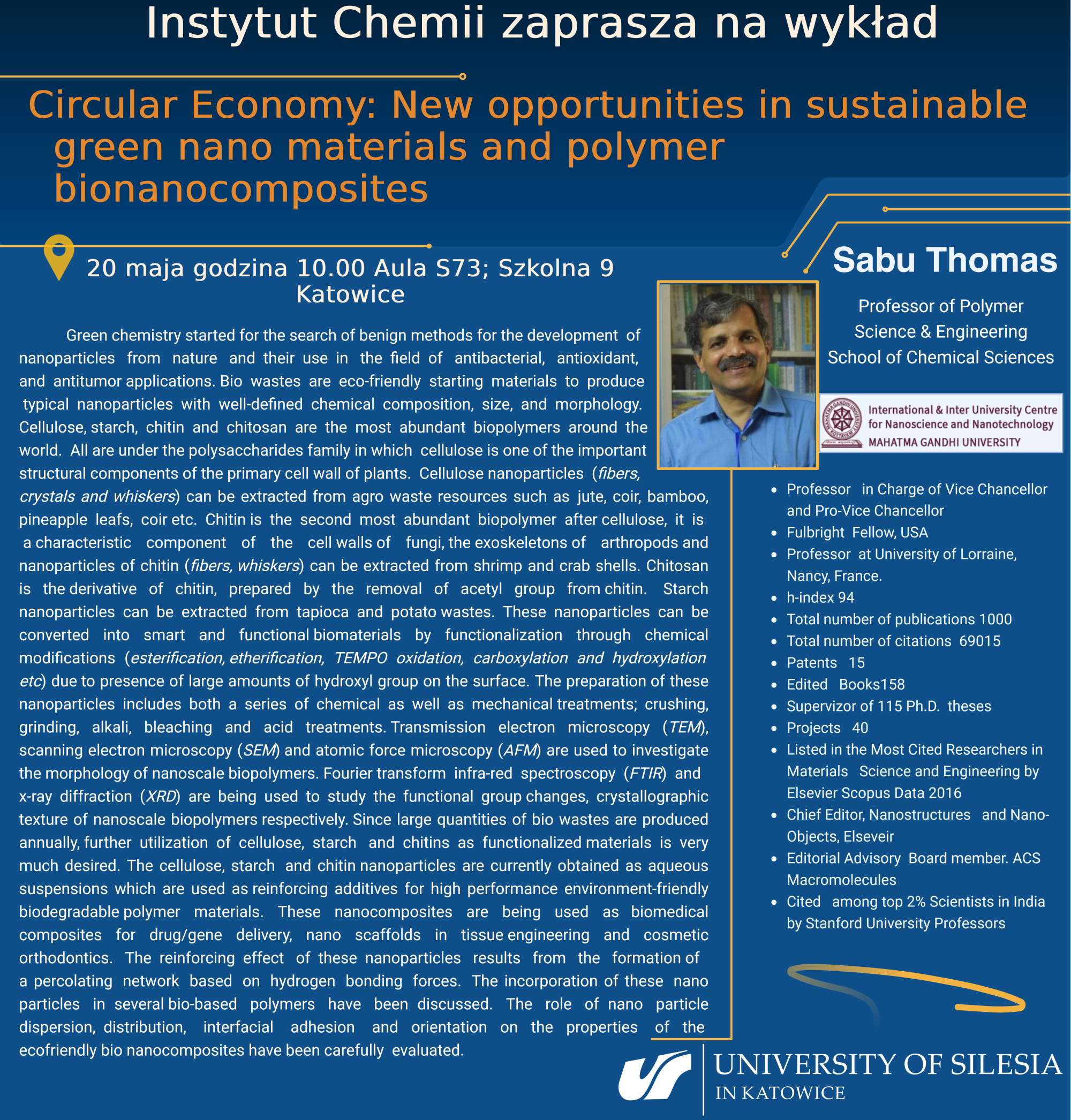
Instytut Chemii zaprasza na wykład pt.: „Circular Economy: New Opportunities in Sustainable Green Nano Materials and Polymer Bio-Nanocomposites”, który wygłosi prof. Sabu Thomas z Mahatma Gandhi University Kottayam, Kerala, India.
Wykład odbędzie się 20 maja o godzinie 10:00 w auli Instytutu, sala 73, budynek przy ul. Szkolnej 9 w Katowicach.

Sylwetka prelegenta: www.sabuthomas.com
Abstract
Green chemistry aims to develop environmentally friendly methods for producing nanoparticles from natural sources, which can be utilized in antibacterial, antioxidant, and antitumor applications. Bio wastes, such as cellulose, starch, chitin, and chitosan, abundant biopolymers worldwide, serve as eco-friendly starting materials for nanoparticle production with defined chemical composition and morphology. Cellulose, a key component of plant cell walls, can be extracted from agro waste resources like jute and bamboo. Chitin, found in fungal cell walls and arthropod exoskeletons, can be sourced from shrimp and crab shells, while chitosan, a derivative of chitin, is obtained by its deacetylation. Starch nanoparticles can be derived from tapioca and potato wastes. Chemical modifications, such as esterification and carboxylation, enhance their functionality. Various microscopy and spectroscopy techniques, like TEM and FTIR, characterize the morphology and chemical properties of these biopolymer nanoparticles. Utilizing these biowastes as functionalized materials is highly desirable due to their abundance and sustainability. These nanoparticles are used in biodegradable polymer nanocomposites for biomedical applications such as drug delivery and tissue engineering. The reinforcing effect of nanoparticles in these composites enhances their mechanical properties through hydrogen bonding forces. Additionally, the dispersion and orientation of nanoparticles significantly impact the properties of these eco-friendly nanocomposites.






